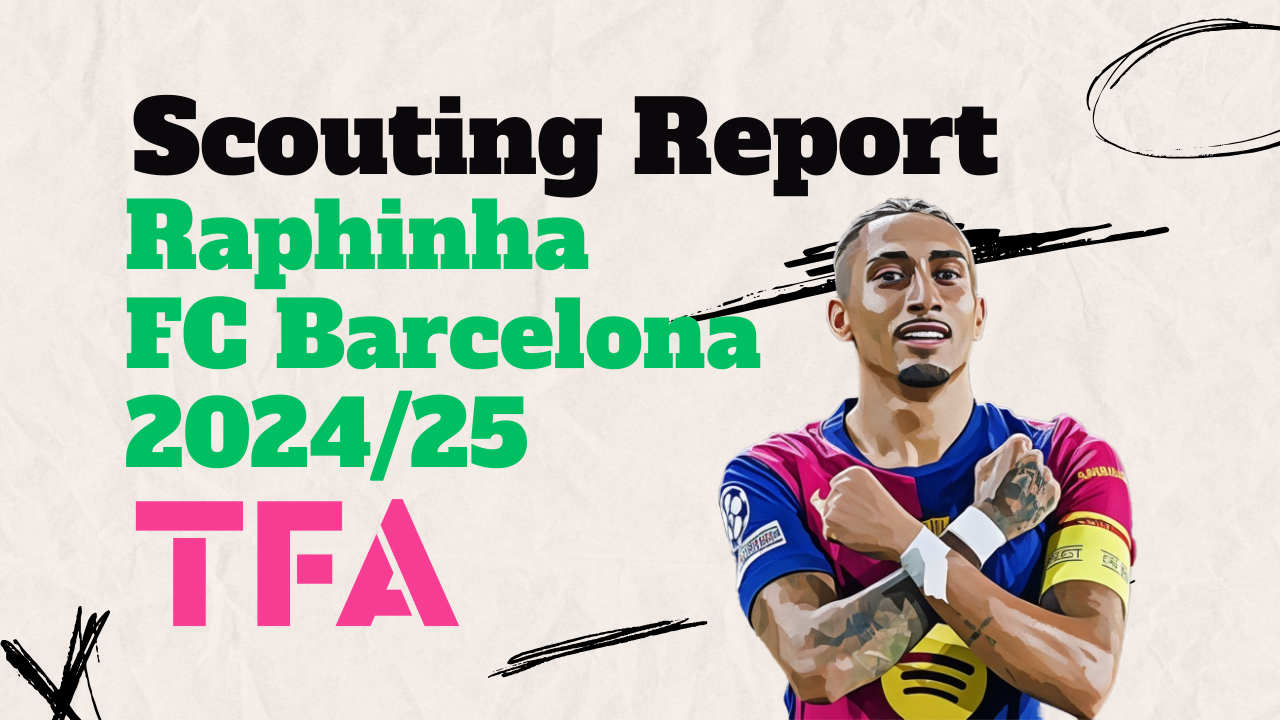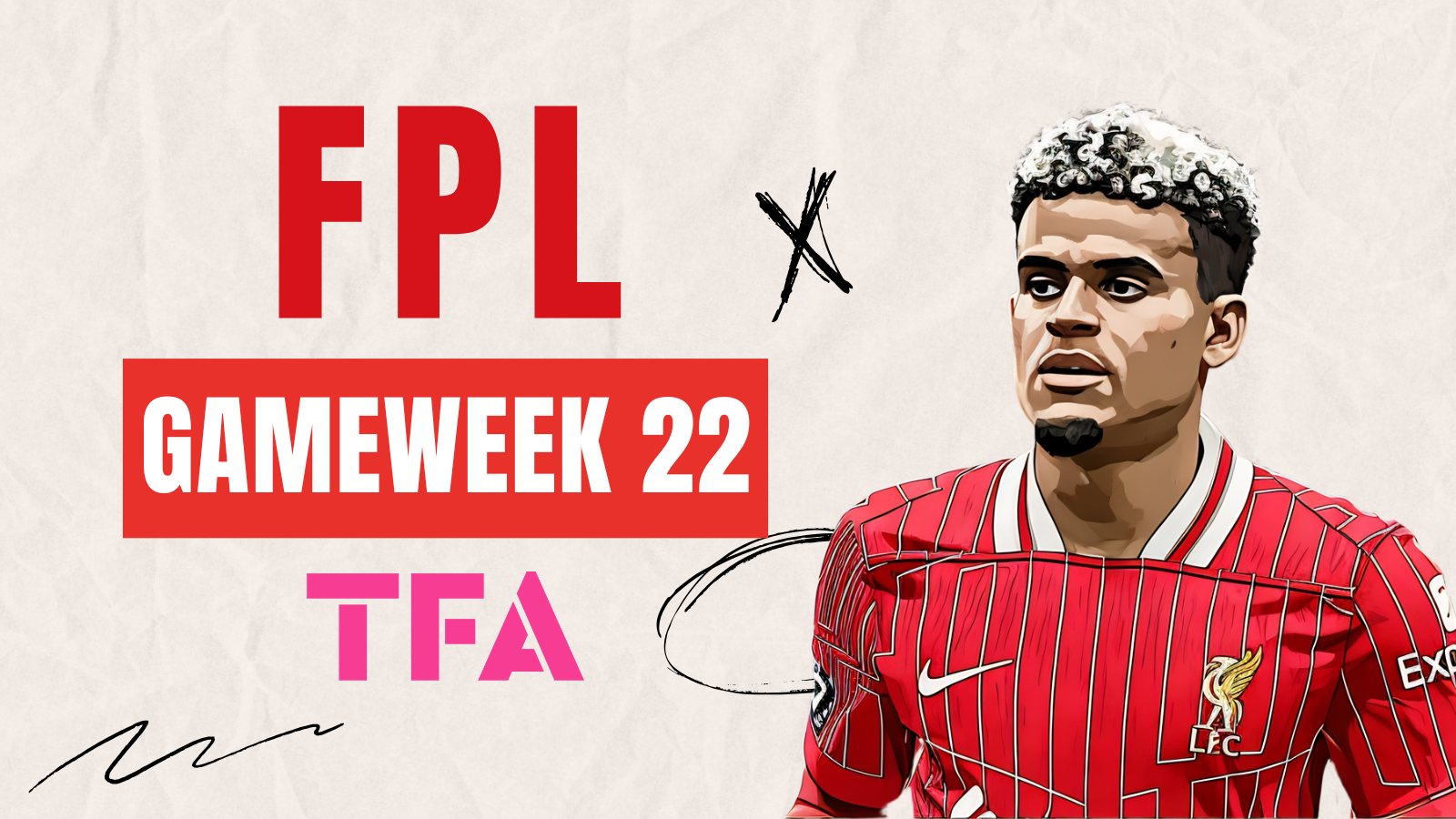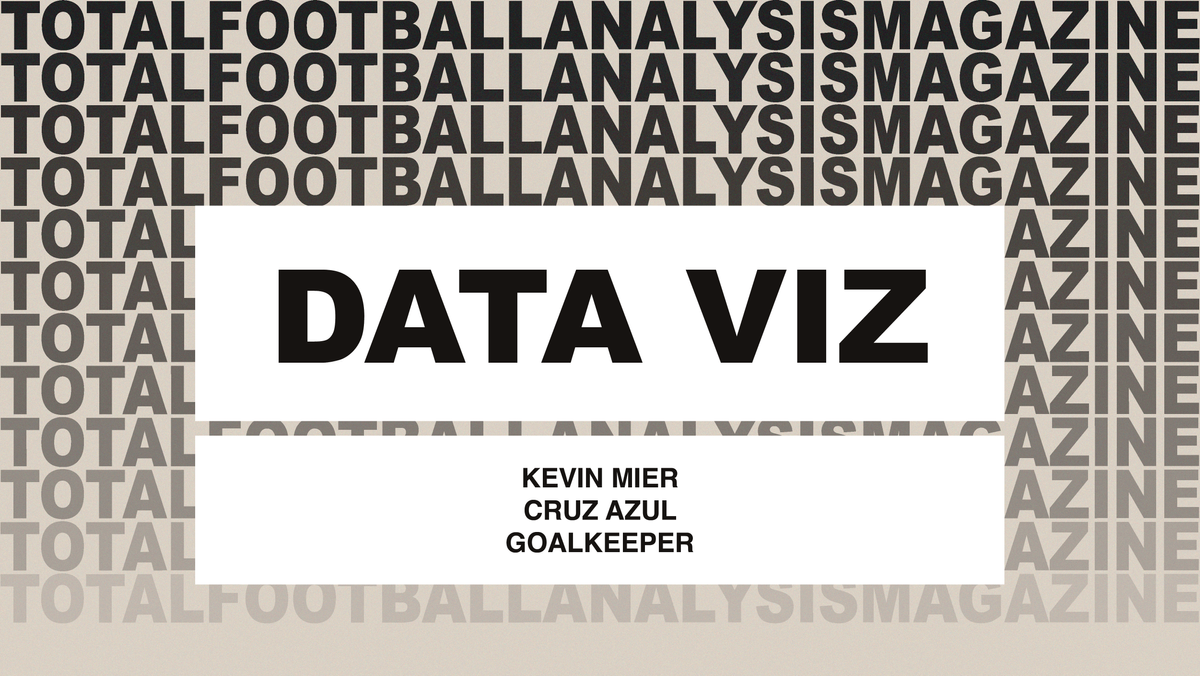FC Barcelona are rarely out of the headlines in Spanish football, and their resounding victory in the Supercopa de España continued their emerging tactical superiority against fierce rivals, Real Madrid.
But under Hansi Flick’s reign, one player in particular has undergone a positive role change that has really turned him from zero to hero throughout the 2024/25 La Liga season.
Raphinha doesn't necessarily fit the mould of a traditional Brazilian or Barcelona winger.
Still, he is truly finding his feet with exceptional attacking output and an increased sense of leadership and belonging at the club.
With 30 goal contributions so far this campaign, he is already eclipsing his best statistical seasons in such a short number of games.
A huge reason for this would have to be his role evolution over the years.
He has learned from different tactical systems and now finds himself in a high-functioning Barcelona attack, which suits his key tactical traits to a tee.
For a winger who was constantly exiled from the starting eleven and linked with a move away from the club, Flick now finds himself with an almost indispensable attacking outlet.
Our tactical analysis and scouting report will delve into some of Raphinha’s most important assets, which have allowed him to fit seamlessly into Hansi Flick’s tactics this season.
We will also shed light on his influence over Barcelona’s overall attacking setup, with important connections forming between Raphinha and his teammates to help unlock defences across La Liga and the whole of Europe.
Raphinha’s Role Evolution
Raphinha really came to prominence with his impressive performances at Leeds United under Marcelo Bielsa.
He successfully guided the Whites to Premier League safety in his final season before moving to Spanish football.
It was clear that the Brazilian and his Leeds teammates had a huge class gulf, which resulted in Bielsa assigning Raphinha a huge attacking responsibility.
Despite Bielsa experimenting with multi-functional wingers who could operate on either flank, Raphinha saw the majority of his play taking place on the right wing.
He acted as more of a touchline-hugging facilitator, with most of Leeds’ attacking sequences flowing through him.
Raphinha Heat Map Premier League 2021/2022

When moving to Barcelona, Raphinha’s natural development would appear to have been stunted by intense competition and key tactical tweaks, which limited his opportunity within the starting XI.
Xavi appeared to initially prefer the profile of Ousmane Dembélé as his right-sided winger, probably due to the Frenchman’s expertise in isolated dribbles and talents when operating closer to the perimeter.
It links back to our previous statement about Raphinha not necessarily being a winger that you would usually associate with the likes of Barcelona.
When operating out wide, Raphinha’s ability to produce successful dribble attempts is not exceptional.
His only 3.75 take-on attempts per 90 minutes place him within the 53rd percentile of La Liga wingers.
Combined with his 50% success rate when performing said take-ons, it became apparent that Raphinha’s skillset wouldn’t be the most effective in breaking down opposition low-blocks out on the flanks, especially when Lamine Yamal was emerging as a more progressive ball-carrying profile (3.60 successful dribbles per 90).
Xavi’s preference for a more all-rounded midfield on the left wing also minimised Raphinha’s options on the other flank.
The likes of Pedri, Fermín, or Gavi were used to offer numerical superiority through the central channels when Barcelona was out of possession or even more ball circulation when building up attacks.
Raphinha Under Hansi Flick
Under Hansi Flick's style of play, Raphinha seems to be operating at an entirely new level.
He is deployed in a role and position that Xavi seemed to recognise as much more effective towards the end of his Barcelona tenure.
With the knowledge that Yamal’s position on the right wing is almost untouchable after his consistent world-class form, Raphinha has found comfort in playing as an inverted winger on the left.
The key elements for the Brazilian are his freedom to affect the central areas of the pitch and his ability to combine with Lewandowksi to form a strike partnership at times.
Raphinha Heat Map La Liga 2024/2025

Flick is comfortable with the knowledge that Balde's advanced movements from the left back can stretch the opposition defence's width.
Raphinha can add to Barcelona’s attacking presence between the lines and support their central progression.
The fitting part for Raphinha is that he doesn’t need to be such a crucial part of his side’s chance creation, as we saw at Leeds, with Flick actively minimising his touches in the middle third (20.83 per 90) compared to the final third (35.07 per 90).
Whilst minimised, these touches are high in quality and often tie nicely to Barcelona’s newfound ability to utilise quick attacking movements to combine.
Against Real Madrid, Raphinha pins his opposing defender before dropping deeper to receive.
He eventually flicks a nicely weighted pass around the corner for Pedri to latch onto inside the penalty area.

Raphinha has been much more impactful as a final attacking outlet, often representing Barcelona’s most advanced presence who can play on the shoulder of the last defender.
Raphinha’s Attacking Movement
The most prominent feature of Raphinha’s game this season has to be his explosive movement within the attacking third.
He helps to unlock opposition defences as that dynamic catalyst.
Raphinha Ball Progression Map La Liga 2024/2025

The way in which he can manipulate space has both a direct and indirect influence on his side’s attacking moves, perfectly playing into the hands of his teammate's key qualities as well.
Take, for example, FC Barcelona’s match against Real Valladolid.
In it, Cubarsi is poised in possession and ready to launch one of his trademark long passes into the final third.

Raphinha’s starting position was in the left half-space as a result of Balde’s height on the left wing, but his darting run cuts across the pitch to a position where the Brazilian can receive the pass in behind and convert from a much more centralised zone.
This further highlights the relationship between Lewandowski and Raphinha.
The Polish striker’s movement to drop deeper subsequently created space for Raphinha to occupy through the centre.
Barcelona’s use of these counter-movements can also create space for their attacking outlets in wider positions, which effectively complements Raphinha’s energetic and relentless nature when out of possession.
When facing Mallorca earlier in the season, we can observe how Raphinha’s inverted run between the Mallorca defenders gave Balde enough time and space to receive Yamal’s pass unopposed over on the left flank.

The crucial element was that his darting run to split the right back and right central defender garnered the attention of both players, signifying how influential Raphinha has been when operating all over the final third.
Raphinha’s Attacking Output
From these darting runs off the shoulder of the last defender, we see Raphinha scoring a large majority of his goals when crafting attacks out of nowhere.
It has provided Barcelona with an extra element to their attacking prowess, boosting their consistency and effectiveness as more of a dangerous transitional side that can hurt sides who might like to adopt a higher line.
This was evident when facing Borussia Dortmund in the Champions League.
The German outfit was unlocked through the middle of the pitch, and Raphinha expertly timed his run to beat Dortmund’s offside trap before converting a 1v1.

However, Raphinha is not only effective when attacking clear space behind him.
He can also use his intelligence to craft crucial spaces in and around the opposition penalty area.
His goal against Crvena Zvezda was an excellent example of this, where he chose to ignore the opportunity to bolster Barcelona’s box presence before curving his run towards the edge of the penalty area.

He received Koundé’s cutback in acres of space before slotting the ball into the net, which was an excellent first-time finish.
The technical quality of Raphinha in and around the penalty area is supported by his underlying statistics, which highlight that he is currently operating within the 98th percentile for both non-penalty expected goals (0.61) and shot-creating actions (6.07) per 90.
Raphinha Shots Map La Liga 2024/2025

This allows him to be much more comfortable when playing as Barcelona’s main striking outlet, with important relationships forming between him and his teammates to recognise the timing of Raphinha’s runs and the style of pass that will suit him best.

Raphinha’s Defensive Contributions
With a more centralised starting position, Raphinha has also been able to showcase his qualities out of possession.
In an age when key attacking contributors are often allowed to conserve their energy in the defensive phase, Raphinha maintains an energetic approach to pressing, which has led him to lead the line against some of La Liga’s best.
Against Atlético Madrid, Raphinha and Fermín can be seen leading the initial Barcelona press when inverting off the two flanks.
Robert Lewandowski drops deeper to block Atletico’s first midfield presence, and Jules Koundé moves high to cut out any short pass towards the flank.

When operating slightly deeper, this approach can morph into a more intuitive defensive one.
Raphinha can recognise his opposition’s preference for central progression by cutting out key line-breaking passes within the right half-space.

When working as an out-and-out number 10 for Barca, we see how Raphinha can also become such an important presence when defending in transition.
With Valencia looking to counterattack into open space, Raphinha represented Barcelona’s only true defensive resistance through the centre of the pitch.
His incredible energy allowed him to get between the player and the goal before forcing a wayward pass that Koundé could intercept.

Conclusion
Raphinha would appear to have finally hit the ground running at Barcelona, almost perfectly depicting the style of play that Hansi Flick has aimed to inject into this talented squad.
It seems as though his current role has almost been moulded around his most effective footballing qualities, with Raphinha given the freedom to affect play with his relentless running and direct nature.
This major switch from a creator to finisher showcases his talents in front of goal — something that was surprisingly under the radar despite back-to-back 10+ goal seasons under Xavi.
With Lamine Yamal utilised as the high-volume dribbler on the right flank, Olmo controlling the pace of play through the centre and Raphinha advancing beyond Lewandowski to play on the shoulder, Barcelona finally seem to have found their ideal personnel in the attacking third.
La Liga is poised to have another exciting finish, with all three Spanish heavyweights ready to battle it out for the title.
Nevertheless, Raphinha is currently on the right path to claiming a ‘world-class’ tagline and a career-best season overall.





Comments